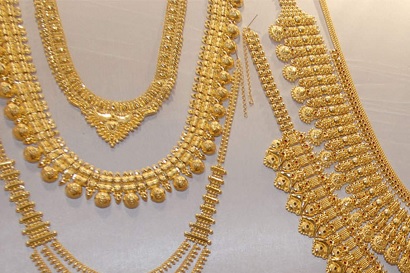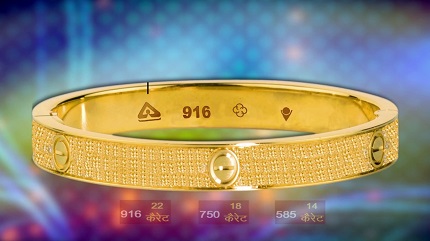"From June 1, 2021, it is compulsory for all jewellers selling gold jewellery and artefacts to register with BIS and sell only hallmarked gold jewellery and artefacts in three grades of 14, l8 and 22 carat gold," Bureau of Indian Standards (BIS) stated in a notification to jewellers. What are the latest provisions and their repercussions

Manadatory hallmarking is supposed to protect consumer's interest and is deemed beneficial for jewellers as well. As it helps to keep a check on supplier quality and projects the retailer as a quality conscious jeweller, it said. The BIS hallmarking scheme consists of a grant of registration to jewellers and recognition to Assaying & Hallmarking (A&H).
Areas Of Concern with BIS Hallmarking Procedures
According to Ashish Pethe of Waman Hari Pethe and Chairman GJC, “Under the mandatory hallmarking regime, a notification on mandatory hallmarking was issued by Ministry of Consumer Affairs earlier on June 14, 2018.”
The supply-chain of the G & J industry has not been taken into account by the authorities. “As there are many provisions which are draconian for the jewellery trade and some provisions are not practical. They can disrupt the industry and therefore need correction. We have represented our concerns with the authorities time and again. G & J contributes 7 per cent to the country’s GDP every year. The authorities had assured us that they would look into the matter,” Pethe added. If this hallmarking is implemented in the present form, as per new provisions you cannot store or transport non-hallmarked inventory. All jewellers need to be registered with BIS. Pethe was talking during a webinar organized by GJC for jewellers from across India.
Will this mandatory hallmarking be a boon or bane?
Said Dinesh Jain from P M Shah & Co. Jewellers, “We welcomed hallmarking – the however, the current BIS provisions aren’t to the point. Hallmarking primarily is supposed to safeguard the interest of the customer in order to ensure that the ultimate consumer gets value for money. Hallmarking labs are working to prove to the world that jewellers are providing genuine products. Therefore in principle jewellers are not against hallmarking. There is a sampling plan is prepared by BIS – wherein they check for homogeneity. Handmade jewellery can never be homogenous – it will be pure and genuine but not homogenous. BIS centres take time to provide appropriate standards. This adds to procedural delay in trade.”

Reality check
Says D D Karel of N M Karel and Sons, “BIS has always been doing what it wants, without listening to the real requirements of the jewellers. BIS portal does not work optimally. BIS wants to prove to the public that they want to lookout for the interest of the ultimate consumer and this shows jewellers in bad light. BIS has a difficult management structure. They do not provide adequate replies to members of the public. The technocrats and bureaucrats who are at the top management believe they are right in every way and that only they know what is best.”
Legally speaking, in case infrastructure is inadequate in a locality – government cannot make hallmarking mandatory. There are jewellers in every village –11 states in India do not have even one hallmarking centre. In MP there are 50 districts – there are only 7 hallmarking centres. In TN out of 30 districts, 16 districts do not have a single hallmarking centre. “Why will a jeweller register with BIS when he has no access to a testing centre. Also secured transport from hallmarking centre to jewellery store is so difficult. G & J trade is covered under Consumer Protection Act. Jewellers have been selling pure gold jewellery even before hallmarking came into force. Government is aware that they do not have adequate infrastructure to provide hallmarking. Minimum time taken to provide hallmarking for any sample is 3-4 hours. If a lab provides hallmarks in 40 minutes flat it is very difficult to believe. BIS has some extended arms – or reference labs -- the irony is that BIS does not trust its own labs. Sample tested and certified by one lab and is often sent to a reference lab. If BIS does not trust its own extended arms, how can jewellers trust such labs,” quips Karel.
Competition ensures quality
No jeweller provides inferior quality products to consumers they regardless of existence of hallmarking procedures. In a competitive world any jeweller who does so is inviting trouble. Explains Rajesh Rokde of Rokde Jewellers, “Even today, people flaunt their ancestral jewellery and proudly say that it was bought from their family jeweller. That is the reputation and loyalty that jewellers have, which has been there because of the fact that they have sold quality products to their clients and continue to do so even today. Interestingly, online application for hallmarking of jewellery is allowed -- but for online application also one needs to visit the hallmarking centre physically at least 3-4 times. In Nagpur even for renewal of hallmarking – we have to visit facility at least 4 times. Bhandara, near Nagpur is at distance of 70-80 kms from the nearest hallmarking centre, which means the jeweller from Bhandara has to transport his jewellery for 160 kms (round trip) at least 4 times. How is it possible? It involves so much of risk as well,” he adds.
Latest provisions
All jewellers who register themselves before June 1 will survive, rest will have to close down. BIS talks about homogeneity of jewellery. Says Nitin Khandelwal, Khandelwal Jewellers, “Homogeneity refers to same batch of making. In reality purity may be same – but the products may not be homogenous. Products can be 916 or 918 but surely all handmade jewellery is non-homogenous. A forceful undertaking for homogeneity is wrong. Quality and integrity of hallmarking centres needs to be cross examined. In case of non homogenous products – testing will take a lot more time. It is therefore in fact going to be extremely time consuming and BIS centres will be all the more inadequate. Jewellers will be held responsible for purity of hallmarked jewellery in fact BIS should be held responsible for hallmarks provided.”
WORDS OF CAUTION
All in all, one can conclude that the government’s noble aims of making sale of only BIS hallmarked jewellery mandatory come along with several serious trade and logistical complications and therefore need to be worked upon in terms of establishing procedural adequacy and competence and then made mandatory in a gradual manner.
POINTS TO NOTE
Be the first to comment